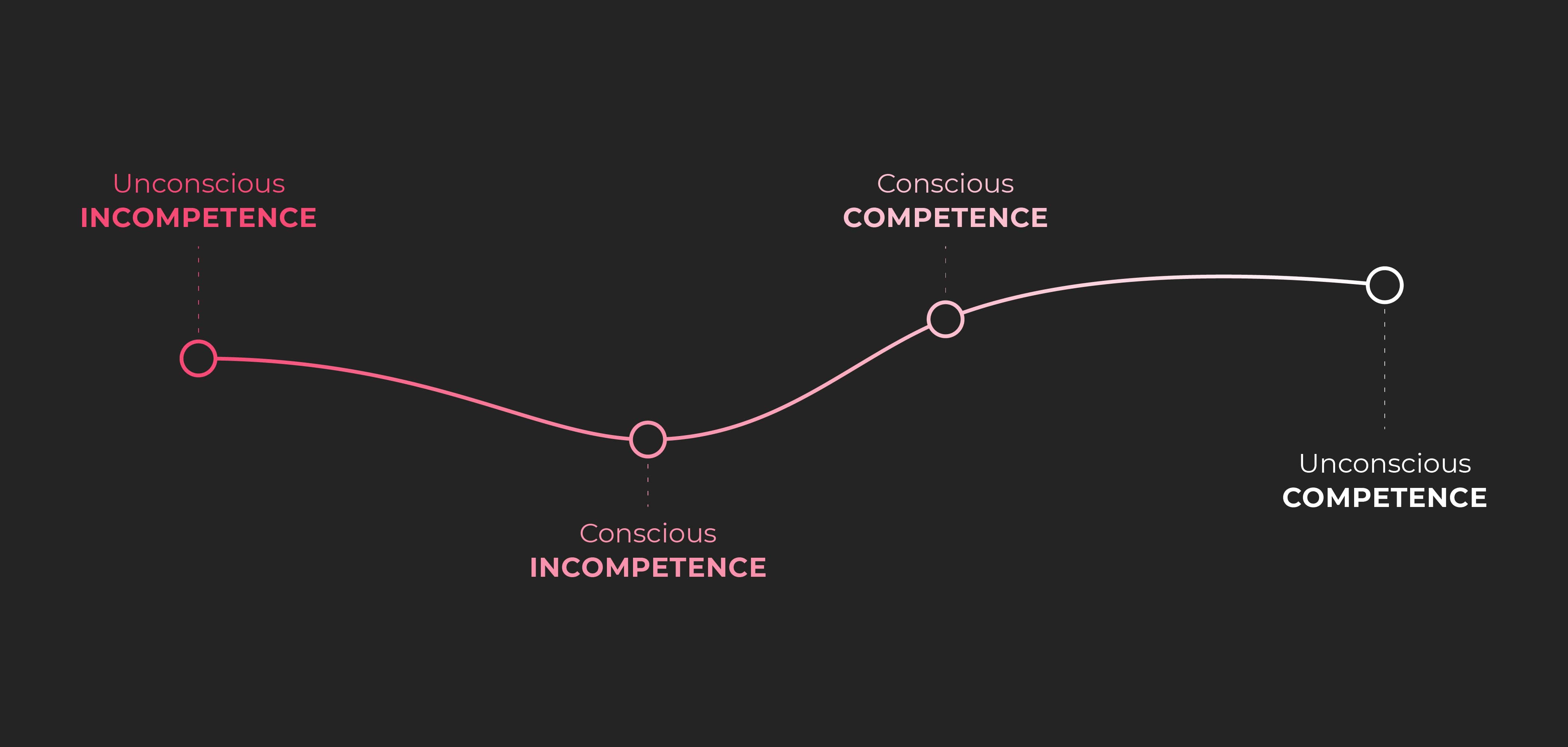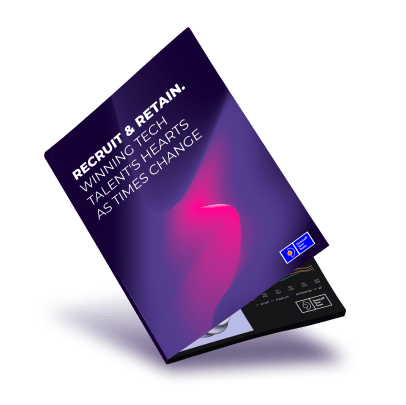The job market remains favorable for candidates. According to the survey, 52% of them believe they hold the advantage over employers. While 78% of jobseekers are confident they can earn more by changing jobs rather than remaining in their current positions.
Summing up the most popular reasons for quitting, which influence retention in tech, we have estimated that one developer replacement costs 1–2 additional compensations. Yet, increased recruitment costs are just one item on the list of stoppers for business growth. High turnover rates hamper productivity and lead to loss of company knowledge.
The developers’ competence and expertise modify the overall performance and success of a tech company. Close-knitted teams create innovative software solutions and drive technological advancements. Tech staff turnover is to reduce, while company turnover is to rise — ensured, not stirred.
The report provided by LinkedIn Learning says that 83% of companies have planned to work on their People Ops in 2023. We are talking now about how tech companies can win the battle for talent by identifying the stage at which developers are most likely to leave, and then implementing strategies to retain their top talent.
Developer’s Life Cycle and Its Relation to Staff Turnover
Each developer goes through a distinct life cycle, that consists of different stages of competence and skill development. Recognizing and managing these stages properly leads to:
Higher satisfaction with the role within the company;
Better productivity;
Lower turnover rates.

Each stage of the developer’s lifetime impacts turnover rates differently.
The first three months are usually a time when new tech team members are adjusting to the company and don’t imagine the whole task board. Here, developers are particularly susceptible to turnover due to their limited experience and the steep learning curve associated with their role.
From the fourth to the sixth month, they intensively shape their attitude to the company. It’s time when developers see the complex project picture and their lacking skills. The credit of trust freshly-hired techies give to the company starts to exhaust. They notice if the demo version of role responsibilities noticeably differs from the real-world tasks. It’s a solid risk that a lot of new developers will not pass to the next stage.
After about 8 months, developers start to feel that they are successful team members and that their performance corresponds with the company goals. Competent tech specialists stay if they feel their growth. While their knowledge becomes more and more confident, competent staff might attract your competitors.
The closer developers are to their 2-year anniversary of joining the company — the more value they bring to your tech business. Non-standard situations on the project, adding new functionality, conquering new markets, newcomers mentoring, cross-functional communication, strategic planning — it’s easier to proceed with all the things above with seasoned pros well-adapted to your specific conditions.
At the same time, such top performers are not something that will stay with you for granted. They can burn out or, on the contrary, get bored. Then, “long-livers” may consider leaving your team even if they are satisfied with the compensation, friendly atmosphere, and appreciation.
2 crucial points to focus on:
Natural cognitive shifts are inevitable.
They are roadblocks to building a dedicated team if you don’t know how to act accordingly during each stage of the developer’s life cycle.
Guide On Rotating Retention Strategies
You might know how Software Development Life Cycle (SDLC) outlines the phases, activities, and software development tasks from initiation to deployment.
Each step of SDLC is logical and approved by years of practice, right? Its aim is to avoid repetitive actions and idles, ensure proper testing and reasonable improvements, enhance communication between stakeholders, and fasten return on investments.
Standardizing the Developer’s life cycle is as important as standardizing the Development life cycle.
From that point of view, retention of each tech staff member looks like a series of structured practices, or like a framework. We can divide that HR framework into 4 components according to the level of seniority and/or awareness of your tech project.

Level #1. Novice
Actually, this level starts before hiring. Tailored research of candidates with simulating workflow moments prevents early leaving, as you get a clear understanding of your common future. Delayed testing of a cultural fit disappoints developers.
During this level, it is also crucial for tech companies to provide structured training programs, mentorship opportunities, and a supportive environment.
Must-haves are to:
Provide an all-inclusive onboarding (let them study a company background and share standard operating procedures aka SOPs);
Invest time and effort in the growth of novice developers’ confidence and expertise;
Set clear regular communication in a messenger. Whether you choose Slack, Discord, Teams, or anything else, stick to one channel and organize long-lasting topics into threads.
Level #2. Advanced Newcomer
As developers progress, they enter the advanced newcomer stage. They still require guidance and support from more experienced colleagues.
Offering continuous learning opportunities and providing feedback on their work can help advanced newcomers further develop their skills related to the technology stack and your particular project, and transition to the next stage.
Level #3. Mature Team Member
If the previous stages were successfully passed, developers can work independently on complex projects and demonstrate problem-solving abilities. They can contribute to both software design and architecture. Companies can retain seasoned developers by providing challenging assignments, encouraging collaboration, and offering opportunities for professional development.
Keep in mind, taking care of tech pros’ work-life balance is a must here. Also, it’s nice to implement some gamification practices, like:
Hackathons;
Multi-level disqualification rules (for instance, yellow and red cards, as in football: issue yellow attention-grabbing notifications to give the team members time to fix their critical errors and continue with final red ones only if they’ve not reacted properly);
Visual progress bars to track the learning or performing speed and celebrate each new milestone.
Level #4. Project Expert
A clear career path and an opportunity to stimulate and innovate projects can help retain developers highly skilled in your specific domains and loyal to your company. Think of some awards, let them lead the team. Your goal is to make experts fly, not feel stagnation. If their technical power exceeds their current project, maybe there is room for challenge in your company’s spin-off?
How to Develop a Consistent HR Strategy: 2 dimensions
When it comes to reducing developer turnover, a well-structured HR strategy is the only solution. So you need to hire qualified people to manage People Ops. Depending on a founder’s or a CEO’s desire to dive deep into the HR nuances, we can suggest different approaches.

Internal approach
Here, we mean building an HR department in-house. What activities are on your side?
Distinguish between people responsible for product development (for instance, CTO) and people responsible for team scaling and motivation;
Outline HR functions like interviewing, onboarding, arranging initial and on-the-job training, performance and code reviews and well-being check-ins, eliminating possible communication barriers inside the team;
Determine roles related to hiring like HR manager and recruiter;
Establish KPI based on HR metrics;
Make investments in tech team upskilling and organize that training.
External approach
What about tech companies which want to disclaim administrative and organizational burdens related to hiring? They can find an external HR Business Partner.
The right HR BP to support tech company:
Provides the HR services utilizing retention practices based on the thorough analysis of the developer’s life cycle;
Is competent in tech hiring, as the different sectors of the job market require different expertise and behavior;
Processes data securely and can prove that with international certificates.
If you think of collaborating with the HR agencies, we suggest following the IT engagement model check-list to be fully informed about possible hiring practices before adopting one.
Whatever approach you take, the main indicator that you are moving in the right direction is that your developers’ turnover rate tends to zero. Then, your tech staff members advocate to your company, referring their tech friends to join your team.
If you are in search of a relevant action plan and want to consult with HR pros who have more than 12 years of experience in attracting and retaining tech talent, you are welcome to email us at [email protected].
FAQ
How much does it cost to a business to replace one developer?
You can estimate the replacement cost for your case when you take into consideration all the following aspects. Recruitment expenses: advertising the position, engaging recruitment agencies, conducting interviews, and screening candidates. Onboarding and training: initial orientation, mentoring, and resources for the new developer to become familiar with the company's systems, processes, and technologies. Additional responsibilities for other team members slow down project timelines and efficiency. In some cases, companies may need to offer higher compensation packages to attract new talent. On-the-job learning curve: at the beginning, the developer is not able to contribute at their full potential. Frequent turnover creates a negative work environment and leads to further costs associated with attrition.
What is the average developer’s life cycle in a tech company?
On average, developers remain in their positions for 2 years. That is time to fully excel in their assigned roles. If you are interested in the longer time frames, consider utilizing retention techniques right from the start of cooperation with developers.
How to increase developers’ life cycle in the tech company?
Frankly, you need to focus on the developers’ satisfaction with their roles. First, pay more attention to the choice of the right candidates who share your corporate values. Second, prepare all the input not to make them clarify essential data. Then, involve developers in all the activities gradually to avoid confusion. After the adaptation period, encourage them to share and implement their ideas, and participate in decision-making. It’s up to the point that you upskill them with professional courses, provide regular feedback and performance reviews. In the end, don’t forget to check if your developers have enough time to rest and recharge.
Stay in tune
Curated Tech HR buzz delivered to your inbox



